SHIBATA ZESHIN 柴田是真 (1807–1891) URUSHI-E (LACQUER PAINTING) OF MARE'S-TAIL, FERNS, AND BUTTERFLY 杉菜蕨胡蝶図額装漆絵 Meiji era (1868–1912), circa 1880–1890 Urushi (lacquer) on paper, the foreground embellished with gold flakes, depicting three warabi (edible ferns), one of them placed with the head out of view and another with a butterfly perched on its top, flanking two fertile heads of sugina (mare's-tail), and two tall and several smaller sterile stems of sugina; signed Zeshin 是真 with seal Tairyūkyo 対柳居 Overall: 45.4cm × 42.3cm (17⅞in× 16⅝in) Image: 26.5cm × 23.7cm (10¾in × 9⅜in) With cloth-bound storage box (2) Provenance: Sold in these Rooms, 5 November 2014, lot 12 Fußnoten Zeshin depicts the mare's-tail in different stages of development in conjunction with stems of edible fern, enabling the viewer to pinpoint the season as late spring. This precision reflects the influence of Sakai Hōitsu (1761–1828), an important Edo-based painter of the previous generation who transformed the Rinpa style of decorative nature painting by lending it a new naturalism and sense of time and place. For a similar treatment of this theme by Zeshin, also in urushi-e, see Erik Thomsen, 2013, cat. no. 15.
SHIBATA ZESHIN 柴田是真 (1807–1891) URUSHI-E (LACQUER PAINTING) OF MARE'S-TAIL, FERNS, AND BUTTERFLY 杉菜蕨胡蝶図額装漆絵 Meiji era (1868–1912), circa 1880–1890 Urushi (lacquer) on paper, the foreground embellished with gold flakes, depicting three warabi (edible ferns), one of them placed with the head out of view and another with a butterfly perched on its top, flanking two fertile heads of sugina (mare's-tail), and two tall and several smaller sterile stems of sugina; signed Zeshin 是真 with seal Tairyūkyo 対柳居 Overall: 45.4cm × 42.3cm (17⅞in× 16⅝in) Image: 26.5cm × 23.7cm (10¾in × 9⅜in) With cloth-bound storage box (2) Provenance: Sold in these Rooms, 5 November 2014, lot 12 Fußnoten Zeshin depicts the mare's-tail in different stages of development in conjunction with stems of edible fern, enabling the viewer to pinpoint the season as late spring. This precision reflects the influence of Sakai Hōitsu (1761–1828), an important Edo-based painter of the previous generation who transformed the Rinpa style of decorative nature painting by lending it a new naturalism and sense of time and place. For a similar treatment of this theme by Zeshin, also in urushi-e, see Erik Thomsen, 2013, cat. no. 15.

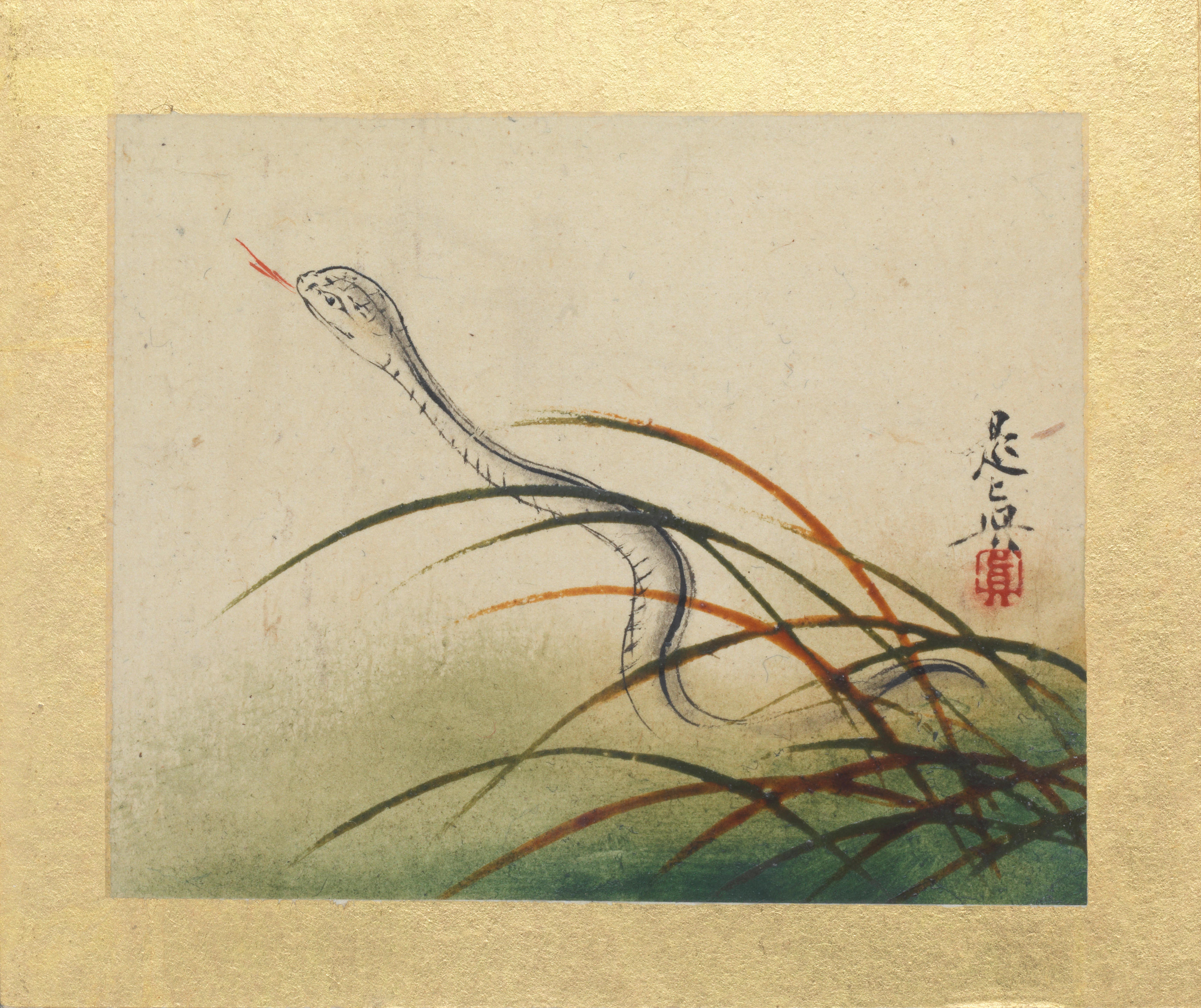
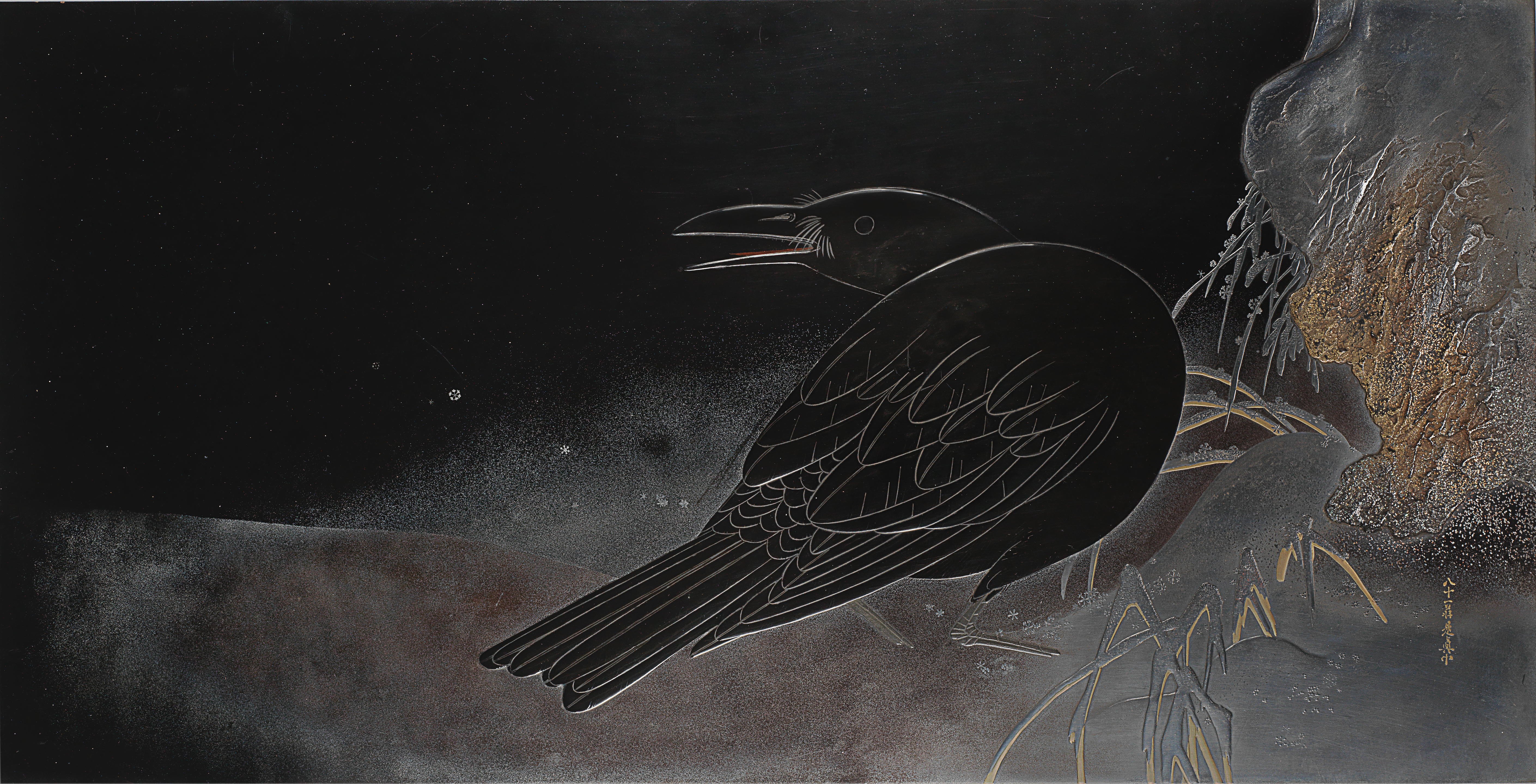

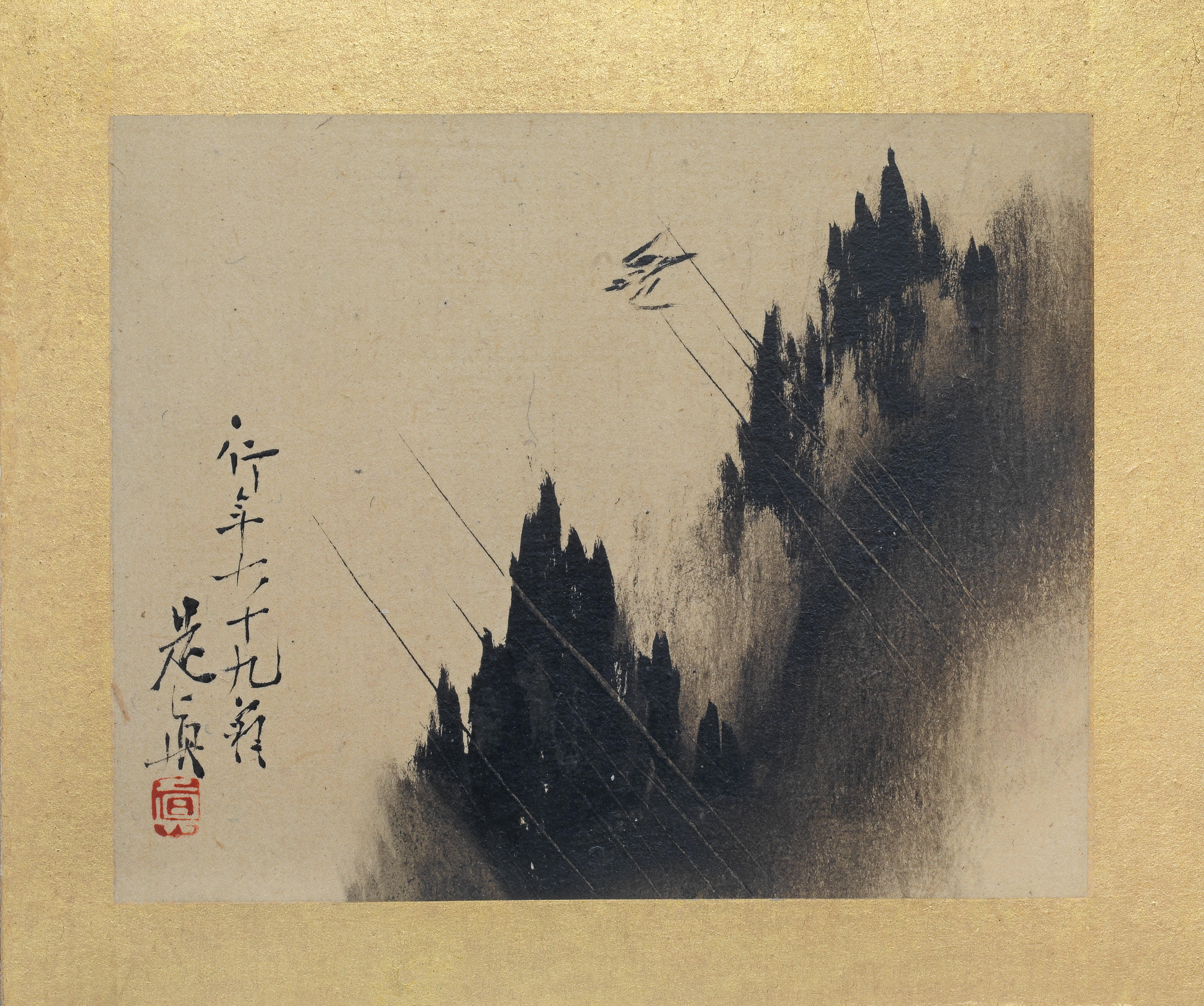
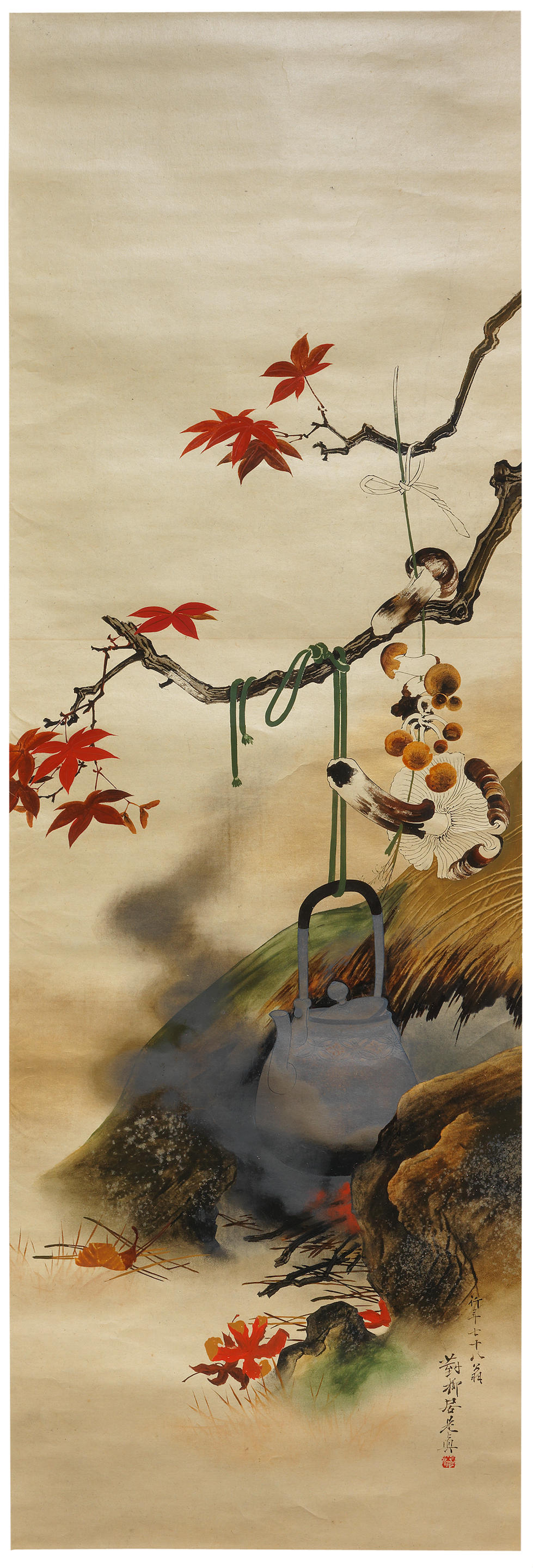

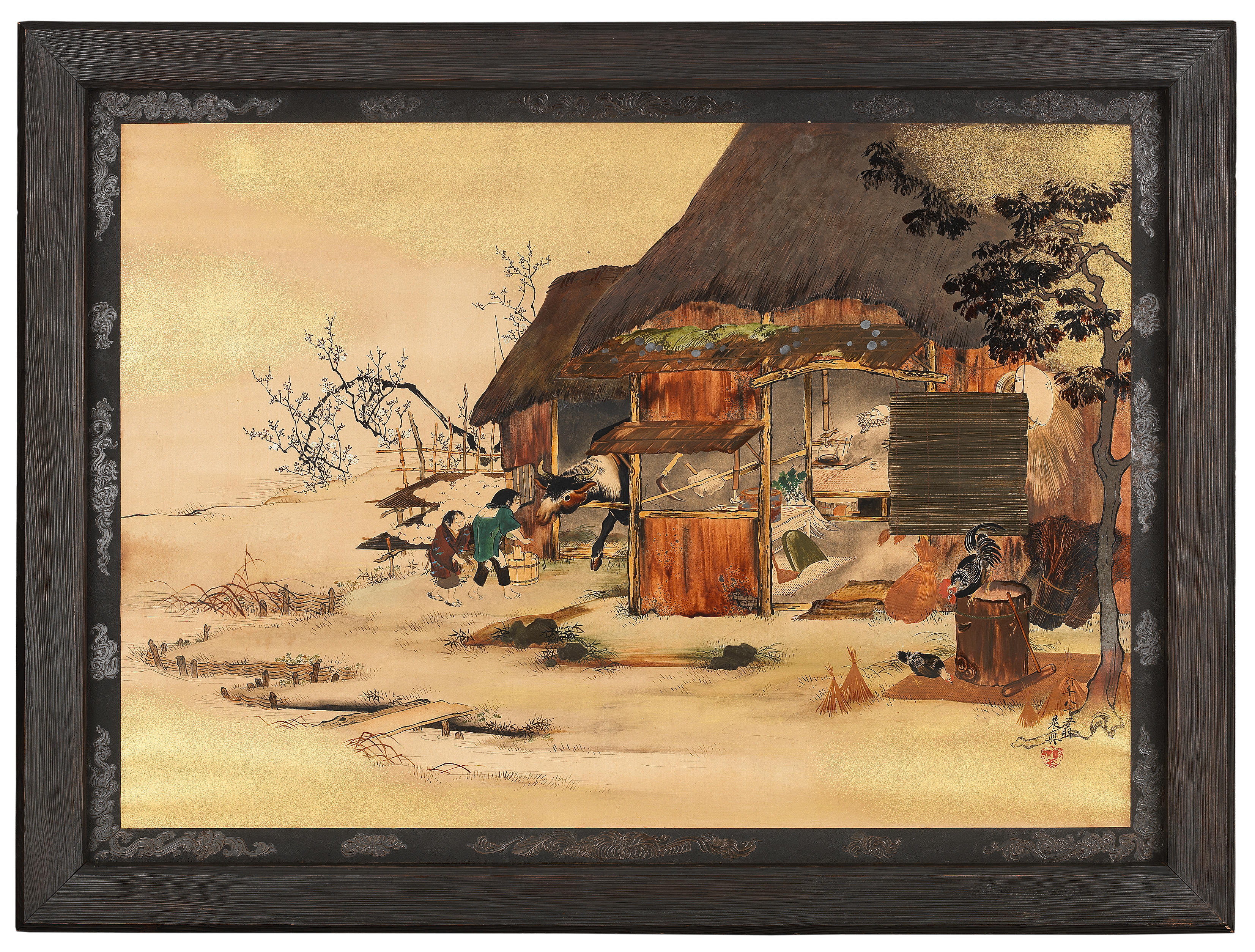
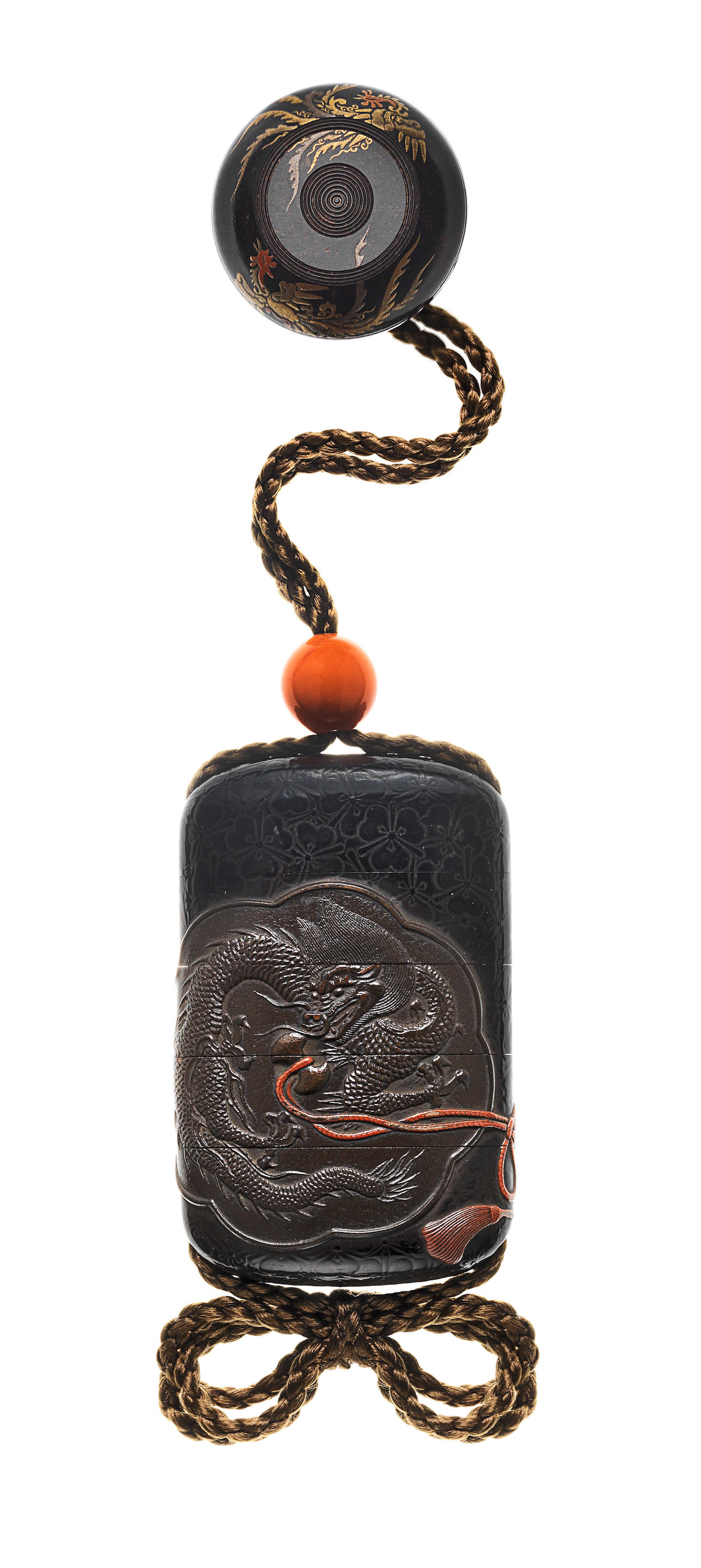

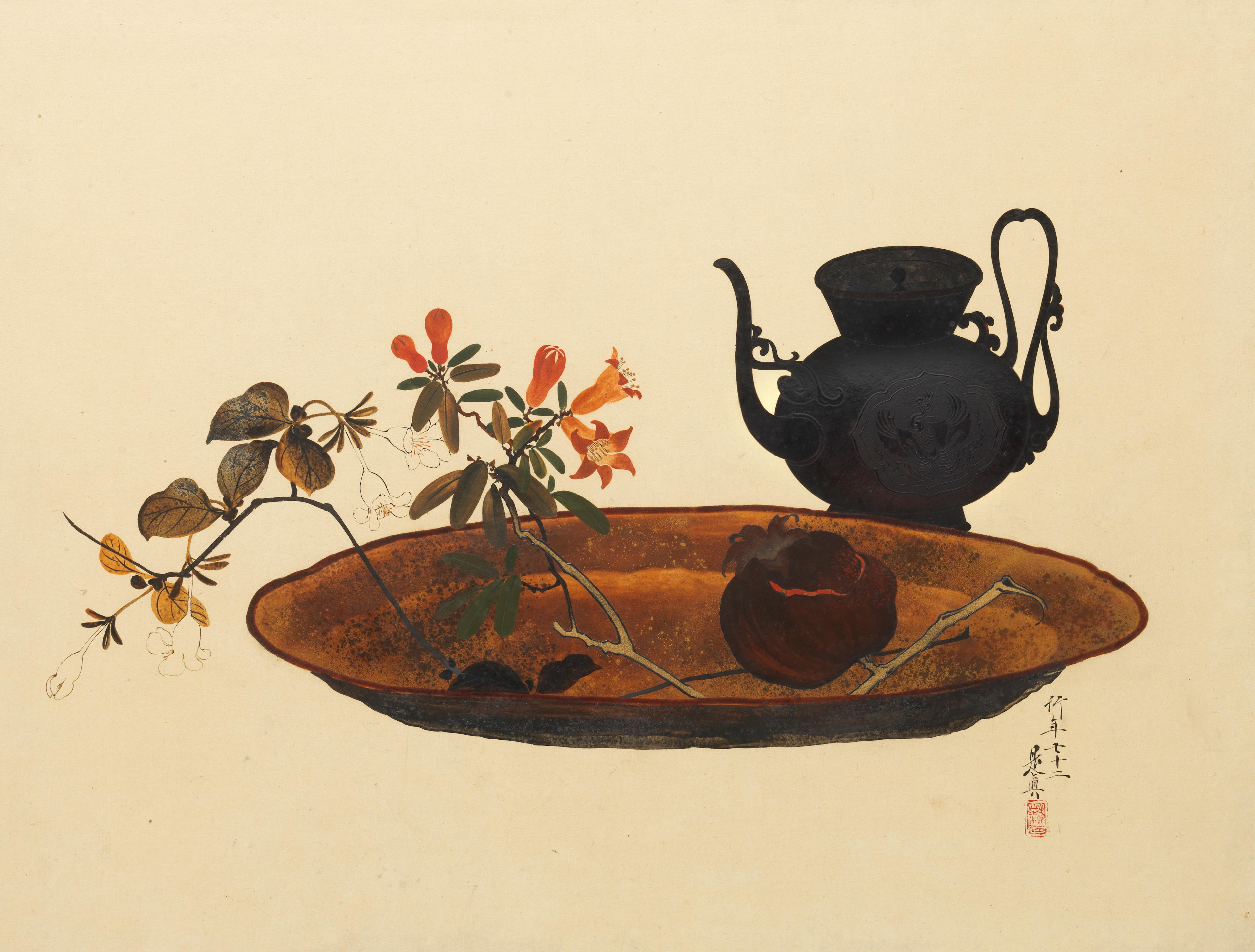
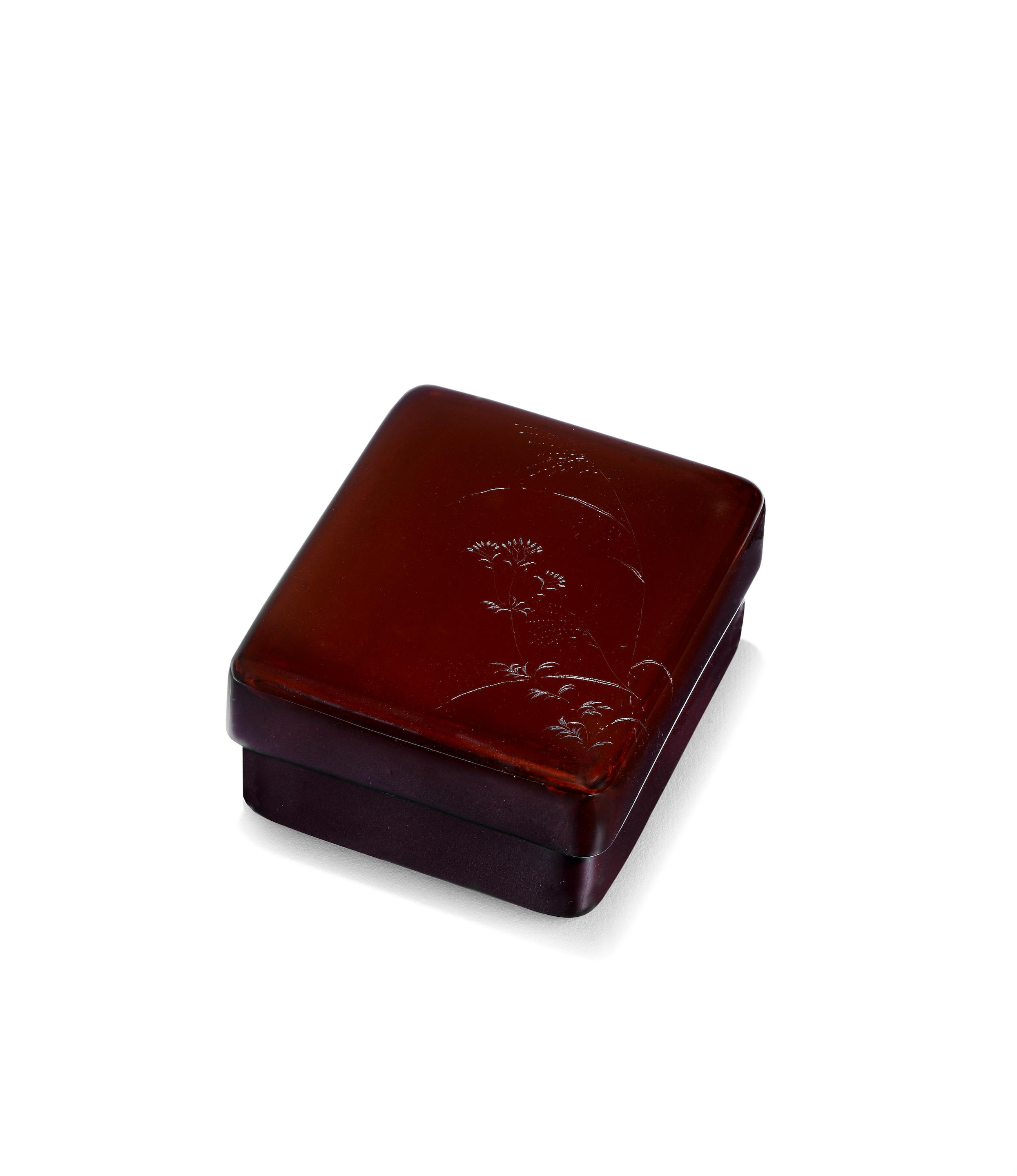
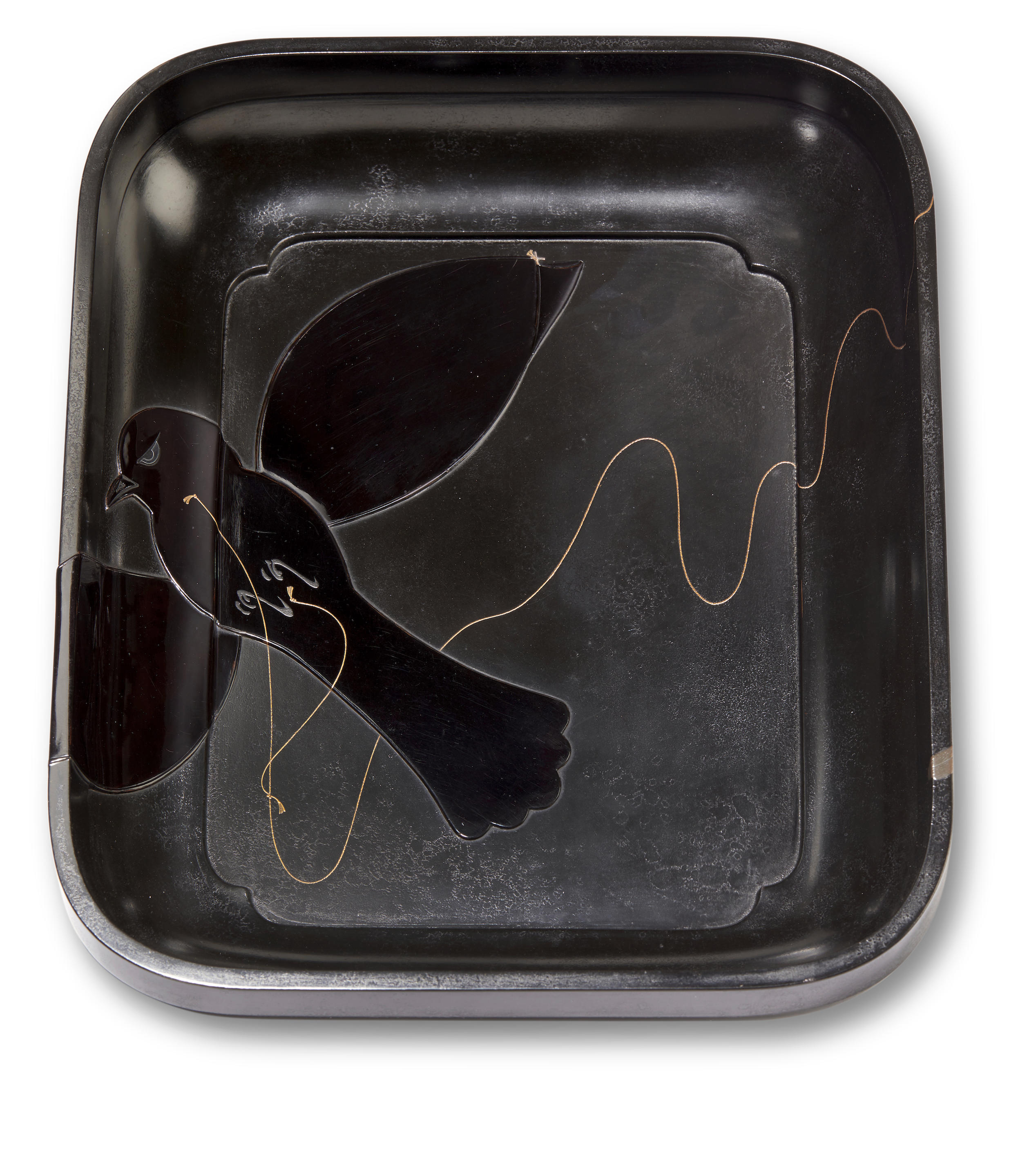
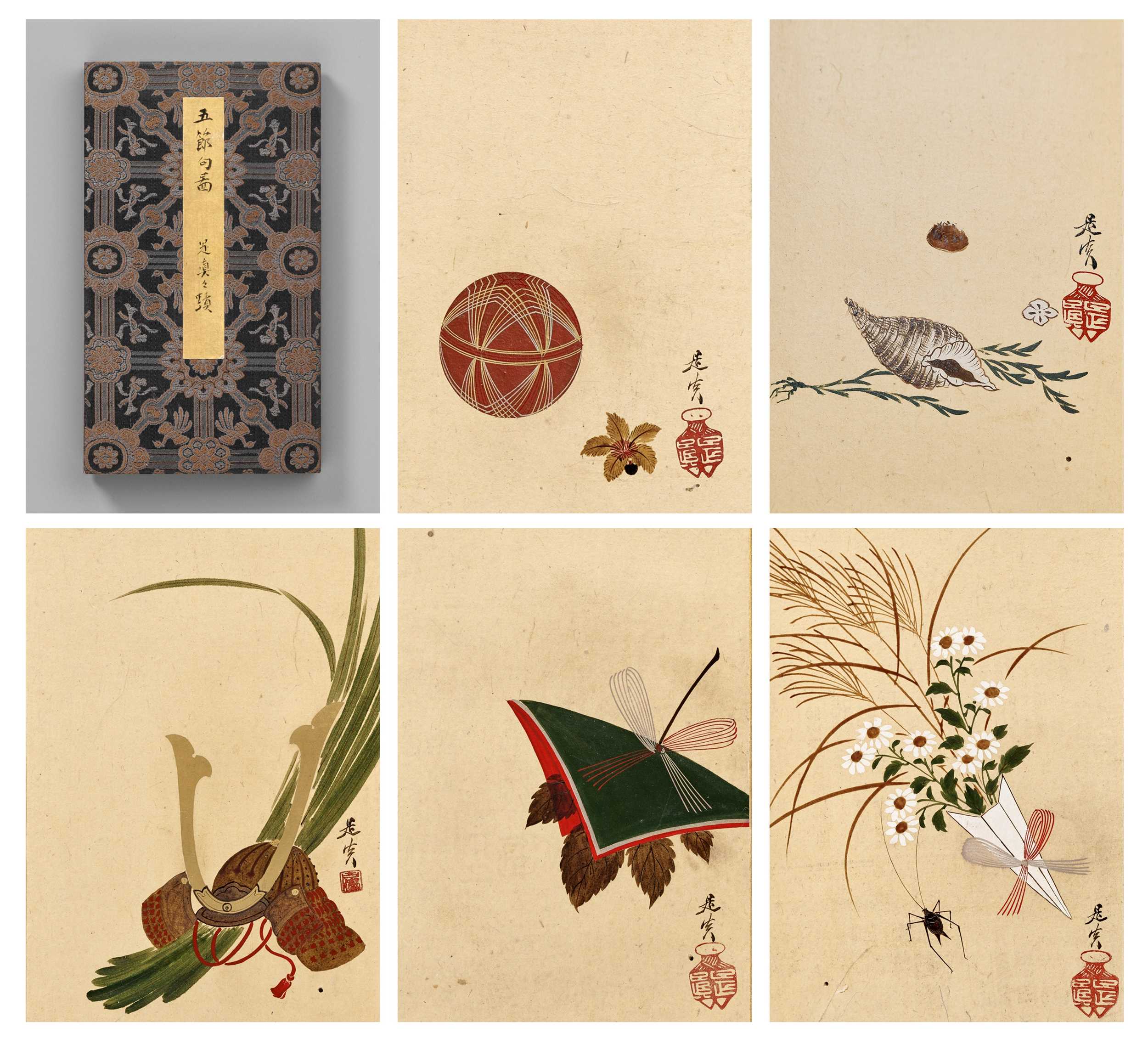
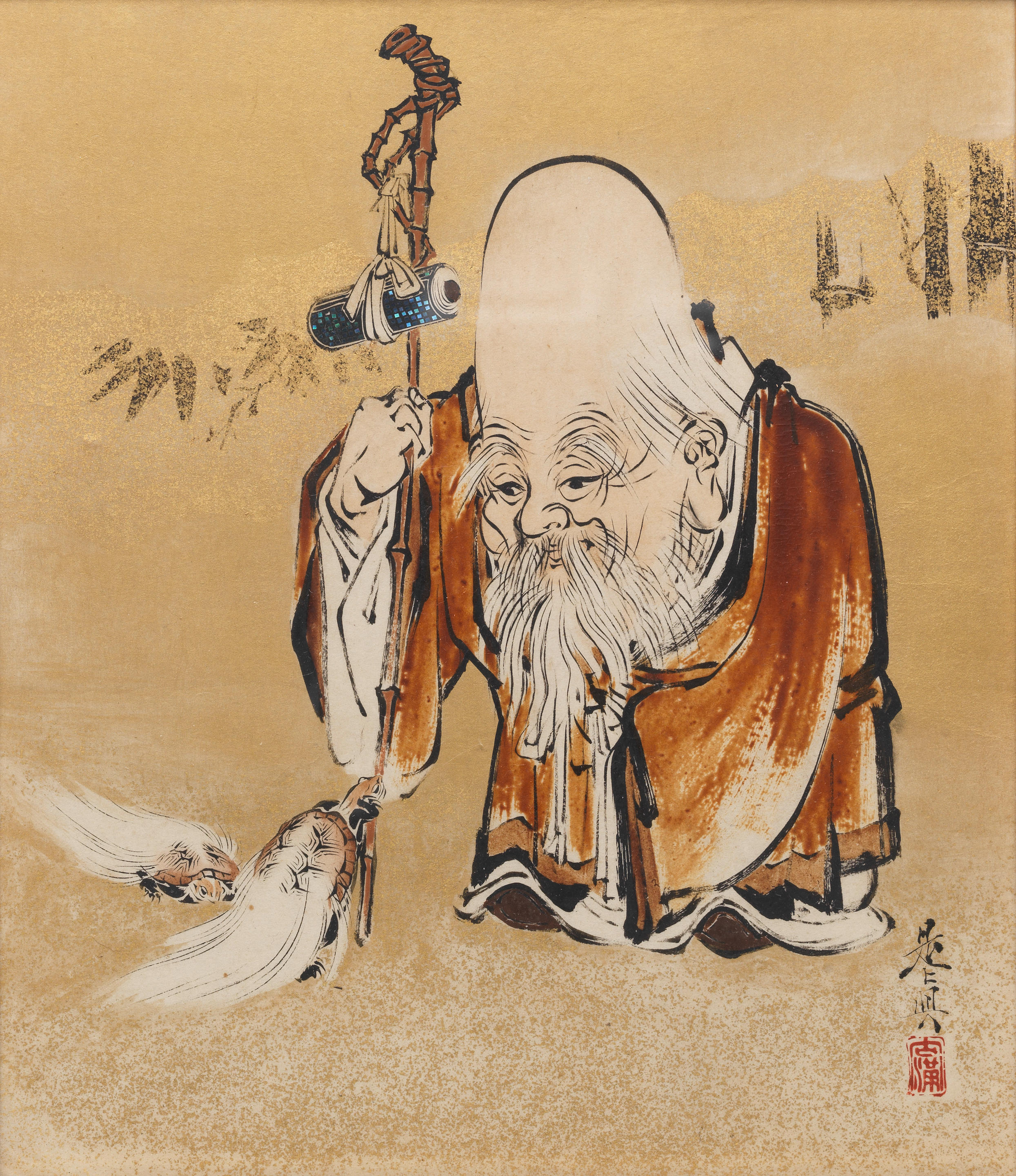
Testen Sie LotSearch und seine Premium-Features 7 Tage - ohne Kosten!
Lassen Sie sich automatisch über neue Objekte in kommenden Auktionen benachrichtigen.
Suchauftrag anlegen